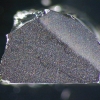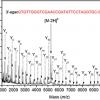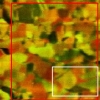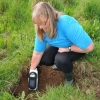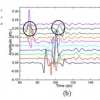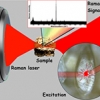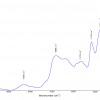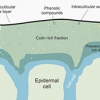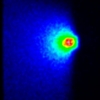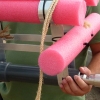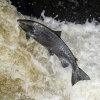This article is is a fascinating look into the use of laser ablation inductively coupled plasma mass spectrometry in forensic examination of glass fragments. These are often associated with crime scenes and easily “attach” to any people near them. Thus, they can be used to link criminals to their crime and to provide information on where a glass fragment might have originated.
Spectroscopy Articles
Pages
This article gives a most useful overview of the analysis and sequencing of nucleic acids by matrix-assisted laser desorption/ionisation mass spectrometry, which should interest all readers and may well serve as a useful tutorial article.
Lithium ion batteries power most of the electrical devices we rely on every day. As well as mobile phones, laptops and tablets, they are finding increasing use in vehicles, with electric cars not uncommon on our streets. This article is from a young scientist who has won help for her research through an instrument company’s support programme. You can find out more, read the article and even apply yourself.
There are a number of advantages of Raman microspectroscopy, including its the ease of its application, as in many cases no or very little sample preparation is needed and the experiments are performed at atmospheric pressure.
The study of metabolites in our sewage systems is not new, but there are particular difficulties with identifying the metabolites from new psychoactive substances, or “legal highs”. The authors describe a wide range of sample collection methodologies and their analysis with mass spectrometry.
It is not every issue that one of our articles starts with a quotation in medieval English, and it is appropriate as two of our articles cover the use of spectroscopy in cultural heritage. This is yet another field where the rich information provided by spectroscopy, along with its non-destructive nature (for many techniques), portability and ability to generate chemical images make it the answer to many questions. Kate Nicholson, Andrew Beeby and Richard Gameson are responsible for the medieval English at the start of their article “Shedding light on medieval manuscripts”. They describe the general use of Raman spectroscopy for the analysis of historical artefacts, and, in particular, their work on medieval European manuscripts and 18th century watercolour pigments. They stess the importance of checking the actual laser power density to avoid damage to priceless artefacts.
Once again developments in portable instruments lead to greater ease of use and the ability to measure far more samples. They describe the application of FT-IR, NIR and XRF spectroscopies to the development of the National Soils Inventory of Scotland, and their work in developing the use of handheld instruments, particularly FT-IR spectrometers.
Terahertz spectroscopy and imaging of Paleolithic cave etchings, 14th century paintings in a church and a mid-20th century Italian painting are all described. This helps demonstrate the versatility of the technique as well as its potential in cultural heritage preservation.
This article looks at the use of Raman and XRF spectroscopies to investigate the different deterioration processes caused by marine aerosols. These techniques can detect the decay compounds and the original composition of the different materials from historical buildings close to the sea, which can then be used to explain the reactions that take place on them. This helps in the development of remedial actions and preventive conservation strategies for historical buildings.
Benchtop mid-IR and NIR as well as portable NIR instruments are used for quick and non-invasive quality control of this traditional Chinese medicine. Adulterations could be detected, as well as the raw herbs and different sources of the Si-Wu-Tang. The success of the mobile NIR instrument is particularly interesting due to the growing interest in such technology for its ease-of-use and cost.
Several earthworm species secrete very small granules of calcium carbonate, and the authors think these are involved in pH regulation. These granules contain different polymorphs of calcium carbonate, including the amorphous form which is very unstable in the laboratory. To investigate this they have FT-IR spectroscopy and mapping, and are continuing this work with Ca XANES.
Much of the exterior surface of plants is covered by the cuticle. This plays a vital role in protecting the plant from water loss, attack by pests and pathogens and damage from UV radiation. Infrared spectroscopy is very useful in characterising cuticles, as we learn in “Infrared spectroscopy as a tool to study plant cuticles” by José Heredia-Guerrero, José Benítez, Eva Domínguez, Ilker Bayer, Roberto Cingolani, Athanassia Athanassioua and Antonio Heredia. The authors point out that, whilst still in its early stages, infrared spectroscopy has provided valuable information about the functional groups, chemical structure and arrangement and interactions of plant cuticle components.
Dates and fates of pyrogenic carbon: using spectroscopy to understand a “missing” global carbon sink
Research into climate change takes many directions, but storing carbon or understanding its release from stores is extremely important. Pyrogenic carbon comes from the incomplete burning of biomass, and can be natural, e.g. wild fires, or man-made, e.g. the production of charcoal. The authors describe the uses of a range of spectroscopy techniques to understand the molecular structure of pyrogenic carbon and its role in the global carbon cycle.
The bio theme moves to mass spectrometry in “Solid mixed matrices and their advantages in matrix-assisted laser desorption/ionisation time-of-flight mass spectrometry” by Marek Šebela. Getting the most from various matrices for use in matrix-assisted laser desorption/ionisation (MALDI) has always been a bit of an art, and the introduction of mixed matrices may increase the number of possible combinations but may improve reproducibility and so simplify analysis in the end. The author describes mixed matrices for a range of samples including proteins, peptides, oligosaccharides, oligonucleotides, lipids, polymers and even intact microbial cells!
As you will have noticed from this issue’s cover, we are making a colourful start to 2016. In the first article on “The analytical niche for Raman spectroscopy in biological pigment research”, Daniel Thomas and Cushla McGoverin suggest that Raman spectroscopy may have a particularly valuable role in pigment biology research. Pigments are almost universal in biology and are the basis of much of what we find attractive in flowers, birds and sea life, such as the fan corals on the cover. The authors show how Raman spectroscopy can be used to quickly confirm the presence of a pigment as well as providing more detailed knowledge about unknown pigments.
Another surface problem is tackled by Richard Pilkington, Stuart Astin and John Cowpe: “Application of laser-induced breakdown spectroscopy for surface hardness measurements”. Measuring the hardness of materials is not entirely straightforward, and the authors show that laser-induced breakdown spectroscopy offers the potential for in situ hardness measurements, without prior sample preparation.
This article tells us about another: “Fast and versatile ambient surface analysis by plasma-assisted desorption/ionisation mass spectrometry”. They show that surface analysis can greatly benefit from approaches using surface–plasma interactions and that PADI shows significant promise to become a valuable and versatile tool for this.
To ensure that the removal and treatment of our sewerage meets increasingly high standards, it is important to be able to monitor the water online both to provide timely information and also to establish changing patterns over days, weeks and seasons. In their article “On-line monitoring for improved wastewater system management: applications of ultraviolet/visible spectroscopy”, Rita Brito, Rita Ribeiro, Tatiana Arriaga, Catarina Leitão, Nìdia Lourenço, Filipa Ferreira and Helena Pinheiro demonstrate the value of on-line UV/vis spectroscopy for wastewater quality monitoring in decentralised wastewater treatment and for spectral on-line monitoring of key quality parameters at the inlet to wastewater treatment plants.
Graphene has been receiving a large amount of interest as its commercial possibilities begin to be realised. Now, with hundreds of companies offering commercial graphene production, analytical measures of graphene quality are required. Raman spectroscopy can be used to “understand the number of layers, strain, doping and importantly the level of disorder present in graphene”, which is described in this article: “Graphene characterisation and standardisation via Raman spectroscopy” by Andrew Pollard and Debdulal Roy.
Fine sediments, often due to run-off from the land, can clog the surface and sub-surface spaces in gravel beds used by spawning fish to lay their eggs and by aquatic insects. Without an adequate flow of oxygenated water, the eggs and insects die. Heather Haynes, Susithra Lakshmanan, Anne-Marie Ockelford, Elisa Vignaga and William Holmes tells us about this in “The emerging use of magnetic resonance imaging to study river bed dynamics”. They have studied the infiltration of various sediments into model gravel beds both outside and flowing through a MRI instrument! They conclude that MRI “provides an exciting opportunity to unravel a plethora of processes relevant to wider environmental science”.

